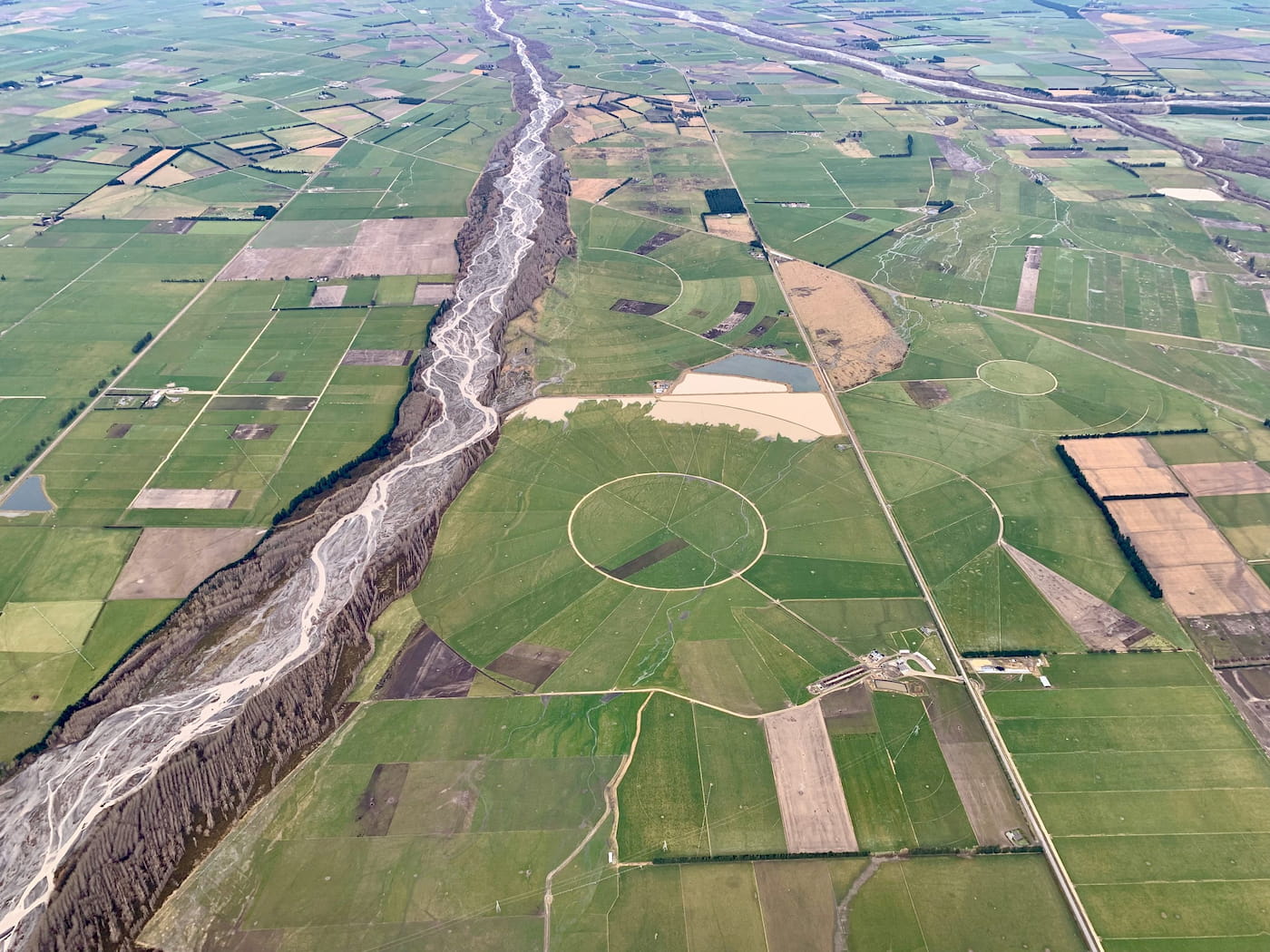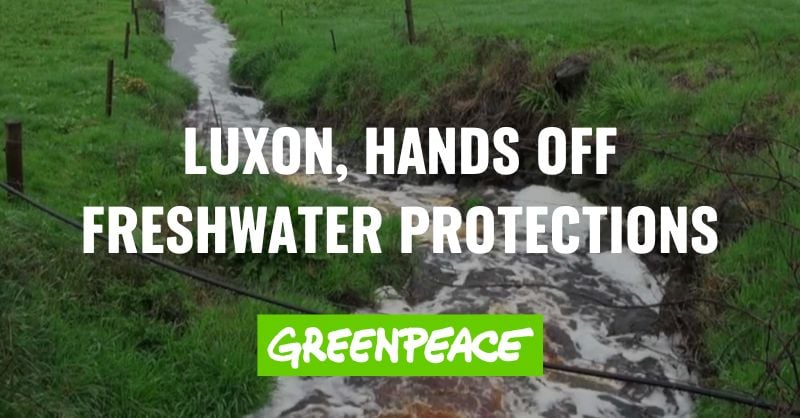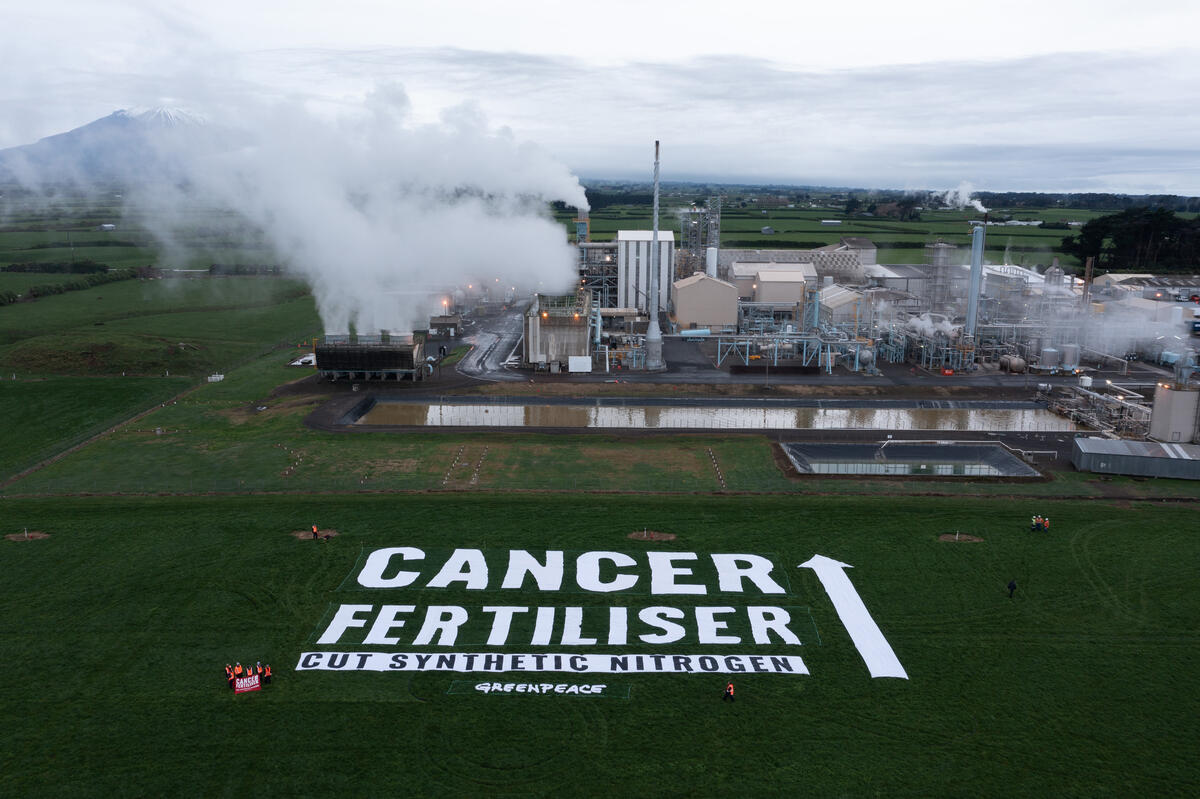Greenpeace says the latest State of the Environment report acknowledges that industrial dairy is driving environmental breakdown, but seems to have cut mention of the cancer and preterm birth risks of nitrate contaminated drinking water.
Greenpeace Senior Campaigner Steve Abel says “The State of the Environment report acknowledges that excessive fertiliser use, dairy intensification and industrial irrigation are killing rivers, intensifying climate disasters and impacting people’s health – but fails to detail the risk of cancer and preterm birth from nitrate contamination.”
“The dairy industry has been telling us they’re cleaning up their act, but the environmental data shows the biggest degradations in rivers, climate, soil, marine coastal areas and drinking water are being caused by industrial dairy and synthetic nitrogen fertiliser,” says Abel.
The report acknowledges the human health impacts of dairy-polluted rivers on drinking water, and points to worsening access to safe drinking water and worsening nitrate contamination risking blue baby syndrome. Yet studies also linking nitrate in drinking water to increased risk of colorectal cancer and preterm birth appear only as unlinked “ghost” endnotes that imply a gap in the body of the report.
“We have to wonder whether the risks of cancer and foetal harm from nitrate-contaminated drinking water have been cut from an earlier draft of the report that was more upfront about the dangers,” says Abel.
“If that’s the case, it remains a frustration that New Zealand’s key environmental report continues to tiptoe around the deadly impact of industrial dairy and fertiliser and fails the 800,000 New Zealanders – mainly rural people – whose health is at risk from nitrate contamination.”
One of the Endnoted studies (Richards J, Chambers et al) warns that 100 cases of colorectal cancer and 40 deaths per year in New Zealand could be attributable to nitrate in drinking water.
“Another glaring omission is the fact that most nitrate leachate is from livestock urine – some 80% of it – yet the word urine doesn’t appear once, and infographics wrongly implicate cropping as the main source of nutrient leachate.”
The word urine – in reference to livestock excreta – appeared 8 times in the 2019 Environment report which more clearly stated its contribution to leached nutrient pollution.
Greenpeace supports the inclusion of te Ao Māori perspectives on te Taiao, which include the reflections of Dr Jessica Hutchings (Ngāi Tahu, Gujarati) who says we need to understand soil “as a living entity and enhance its mauri by protecting and growing its microbial diversity and structure.” Hutchings says that personhood status should be afforded to soil “to change the way we think about soils and to restore their immeasurable value.”
The report addresses soil degradation and soil compaction, due to “large numbers of livestock per hectare,” as a threat to healthy food production and the environment.
The report also points to the “major problem” of plastic pollution accumulating in the environment and the “bodies of many animals,” and the far reaching destructive impact of bottom trawling: “Seabed trawling is a fishing practice that damages the seabed and its habitats. Even after trawling stops, ecosystems can remain damaged and show few signs of recovery for long periods of time.”
While understated, the factual content of the report is powerful supporting evidence for Greenpeace and the environment movement’s calls on the Government to cut synthetic nitrogen fertiliser, reduce the dairy herd, and ban plastic bottles and ocean bottom trawling.
“The stats are in – it’s long overdue that the Government take decisive action to ensure the viability of life for all species, including our own,” says Abel.
ENDS
Ghosted endnotes on drinking water nitrate contamination, preterm birth and cancer that imply passages of the report were removed:
Coffman VR, Jensen AS, Trabjerg BB, Pedersen CB, Hansen B, Sigsgaard T, Olsen J, Schaumburg I, Schullehner J, Pedersen M, & Stayner LT. (2021). Prenatal exposure to nitrate from drinking water and markers of fetal growth restriction: A population-based study of nearly one million danish-born children. Environmental Health Perspectives, 129(2), 1–11. https://doi.org/10.1289/EHP7331
Hosseini F, Majdi M, Naghshi S, Sheikhhossein F, Djafarian K, & Shab-Bidar S. (2021). Nitrate-nitrite exposure through drinking water and diet and risk of colorectal cancer: A systematic review and meta-analysis of observational studies. Clinical Nutrition, 40(5), 3073–3081. https://doi.org/10.1016/j.clnu.2020.11.010
Richards J, Chambers T, Hales S, Joy M, Radu T, Woodward A, Humphrey A, Randal E, & Baker MG. (2022). Nitrate contamination in drinking water and colorectal cancer: Exposure assessment and estimated health burden in New Zealand. Environmental Research, 204(April), 112322. https://doi.org/10.1016/j.envres.2021.112322
Sherris AR, Baiocchi M, Fendorf S, Luby SP, Yang W, & Shaw GM. (2021). Nitrate in drinking water during pregnancy and spontaneous preterm birth.

Call on the Government to lower the limit for nitrates in drinking water to safe levels
Take Action



